
Winchester started as Volcanic Repeating Arms, and later became the New Haven Arms Company before becoming the Winchester Repeating Arms Company in 1867.
Today, Winchester is a division of the U.S. Repeating Arms Company, along with Browning and Fabrique Nationale (FN).
The U.S. Repeating Arms Company is owned by GIAT, a major French defense contractor.
Popular Winchester firearms include:
- Winchester Model 70
- Winchester Model 94
Articles on Winchester Firearms
U.S. Repeating Arms Co – Company Profile
spirit of cooperation and a commitment to quality characterize the atmosphere at U.S. Repeating Arms co.’s new $15 million plant. Opened in October 1994 in New Haven, Conn., the 225,000-square-foot plant house state-of-the-art equipment run by approximately 550 employees. The company that builds Winchester rifles and shotguns has come a long way from the Volcanic Repeating Arms Co.
Winchester: repeating the success of America’s premier arms maker – Winchester rifles by U.S. Repeating Arms Company Inc
January 1991, GIAT acquired Fabrique Nationale (FN), the parent company of Browning. At the time FN owned 40 percent of USRAC/Winchester, so GIAT bought the remainder.
Winchester: rifles and shotguns – U.S. Repeating Arms Company Inc
Legendary. Classic. Traditional. Nostalgic. Quality. Innovative. These are concepts Winchester for over a century and a quarter. Of course you know them – because you gave the to us.
Articles on Winchester Rifles
Setting the standard: Winchester’s Model 1892 perfected the pistol-caliber lever action
When introduced, the Model 1892 had to have made quite a stir. At that time the average deer rifle (rifle–not carbine) weighed about 81/2 to nine pounds or more. Eight and one half pounds was catalog weight for a Model 1873 rifle.
The woods loafer’s gun: Winchester’s darling .25-35 WCF is back
Introduced in the Model 94 Winchester in 1895 together with the .30-30 and discontinued in 1952, Winchester’s mild-mannered .25-35 is back in the Model 94 line. It’s about time, for it’s a pleasant little cartridge, easy to shoot, easy on the shoulder, easy to reload and, on the average, the most accurate cartridge ever chambered in a Model 64 or Model 94 Winchester.
Gone but not forgotten: Winchester’s 9422 lever action
I was shocked and sorry to learn 9422 production is ending. The 2005 catalog lists a series of tribute models in various degrees of engraving and price range, closing out a 33-year run of one of the finest .22s ever made.
The .30-30 Winchester: millions of guns have millions of deer
If you were to claim that more deer have been killed with the .30-30 WCF than any other cartridge you’d get no argument from me. And I’d only fuss a little bit if you said than all other cartridges combined. Such is the popularity of the .30-30.
The Winchester Model 1873: then and now; it might not be the strongest lever action rifle ever made, but 700,000 customers can’t be wrong
The Model 1873 is one of the more significant firearms in American history. Its production life spanned five decades and nearly three quarters of a million were produced.
Winchester’s sleek Model 88
The Model 88 appeared in 1955, the last design in the distinguished line of Winchester lever action rifles. Whether it is the best depends on what is important to you. Certainly it is best suited to modern trends.
Third Time is The Charm: The Winchester Model 70
This legendary rifle has been produced in three distinct versions, and its current incarnation may just be the best yet.
The Winchester
The story of the Winchester levergun goes back to the beginning of the Civil War. In 1860 the Henry rifle was brought forth by B. Tyler Henry. This levergun fired a .44 Rimfire cartridge, held 17 rounds, and was personally purchased by soldiers for battle use against rifles that were much more powerful but only held a single shot.
Articles on Winchester Ammunition
Levergun loads: the .25-20 Winchester: he may be a big bore man, but J.T. has a soft spot for this pleasant little cartridge
By the turn-of-the-century, the 20th century that is, the .25-20 had become the number one varmint and small game cartridge. This was only natural as the rowels of the .25-20 go back to the late 1880s with the .25-20 Single-Shot cartridge.
Winchester Supreme “Platinum Tip” ammunition
The new Platinum Tip bullet is a hollow point design utilizing the conventional cup and draw process for the jacket. Jacket thickness is a hearty .036″ to .038″ and is reverse tapered creating a wedge effect that locks the core and virtually eliminates jacket separation. For comparison, an average “off the shelf” JHP bullet only manages around .015-inch jacket thickness.
Levergun loads: a look at Winchester’s ill-fated Big Bores, the .375 and .356
Both the :375 Winchester and the .356 Winchester chambered in the Big Bore Model 94 are excellent cartridges for hunting big game, certainly for anything in the lower 48. They also work well in handguns, and I have shot both extensively in the T/C Contender in the case of the .375, while the .356 resides in Rock Pistol Manufacturing’s RPM single-shot. Both versions have very much appreciated muzzle brakes.
Adventures with the .300 Winchester Short Magnum
Any time we see a new hunting cartridge there is an immediate debate over its merit as opposed to this or that old standard cartridge. We don’t need to do that this time because the .300 Winchester Magnum is so well proven. And the new cartridge uses the same bullets at the same velocities. What’s to argue? We’re not very far along the learning curve yet, but I can’t see things doing anything but get better.
Levergun loads .30-30 Winchester: Taffin shares a host of good loads for one of our most-used, but least-praised rifle cartridges
he .30-30 is the 13th most popular set of rifle reloading dies sold by RCBS, outselling the 7mm Remington Ultra Mag, 7-08, .22 Hornet, .338 Winchester, .300 Weatherby, 8×57, 6.5×55, .280 Remington, .222 Remington, .260 Remington, .338 Remington Ultra Mag, and .220 Swift.
Winchester’s USA JHP ammunition: Winchester breaks new ground with its USA brand of personal protection hollowpoints
Examination of the bullets used in the new USA JHP ammunition shows the latest thinking in bullet design, and the test results compare very favorably with the more expensive premium loads.
The 338 Winchester Magnum: King Of The Elk Cartridges
The one cartridge that can legitimately carry that mythical label of the “all-around North American big game caliber” is the .338 Winchester Magnum. Here is a modern, efficient .30-’06 length case, chambered in a bevy of reasonably priced rifles, blessed with some of the finest game bullets ever developed, approximating the smashing energy of the .375 H&H and the stretch-string trajectories of the .300 Win. Mag.
Winchester Firearms Manuals
Model 70
Model 94 Top Tang Safety
Model 9410 Top Tang Safety
Model 9417 & 9422
1300 Shotgun
Super X2
Super X2 Practical Supplement
1885 Rimfire
Supreme
1885 Centerfire
Model 1892
Model 1895
Books on Winchester Firearms
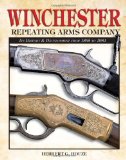
Winchester Repeating Arms Company: Its History & Development from 1865 to 1981Houze’s lavishly illustrated company history demonstrates that the name Winchester, chiefly associated with the manufacture of guns (especially rifles), should also be linked to such products as washing machines and sporting goods. Still, as expected, the emphasis is on firearms in this survey of the company’s fortunes, from its 1856 emergence out of the ashes of the failed Volcanic Repeating Arms Company to its 1981 sale by then-owner Olin Industries. Houze recites the facts and figures of the burgeoning arms giant and sketches such important players in its history as Oliver F. Winchester and Frank Burton. Serious firearms collectors and aficionados will want to read about the seven newly identified 1860s Winchester models, while popular culturalists will enjoy the book’s extensive examination of the art engraved on the company’s products. Many examples of advertising art, some by N. C. Wyeth and other famous illustrators, appear alongside photos of the Winchester factories. More than just another corporate history, this book is crammed with Americana and the history of U.S. industrial organizations and work conditions.

US Winchester Trench and Riot Guns and other US Combat ShotgunsThis is the first book ever written that is devoted to U.S. Combat Shotguns. The story of their development begins during the late 19th Century and carries through the Philippine Insurrection, World War I, the civil disturbances in Central America in the 1920s and ’30s, Prohibition, World War II, Korea, Vietnam, the Cold War and the Persian Gulf War.
Because the Winchester Model 1897 and 1912 were the most commonly used combat shotguns up to the Vietnam War period, the book concentrates heavily on these two models, but by no means neglects the many Remington, Stevens, Ithaca, Mossberg and other shotguns used by U.S. military forces to the present day.
A part-by-part analysis of the Winchester Models 1897 and 1912 is provided with emphasis differentiating between World War I and World War II models. Serial number ranges are listed and factory and inspector’s markings are interpreted. The differences between riot guns and trench guns are explained and the different variations of bayonet mount/handguards are described and related to serial number ranges. The many and difficult problems in determining if a particular riot or trench shotgun was used by the military during World War I is explained.
During World War II, the U.S. military purchased variety of shotguns from several different companies. Some of these shotguns were originally built and marked for the civilian market. Each variation is explained and points of identification are listed. Shotguns purchased and used by the U.S. military through the Persian Gulf War are included.
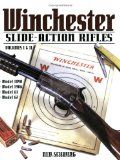
Winchester Slide-Action Rifles
Winchester Pocket Guide: Identification & Pricing For 50 Collectible Rifles And ShotgunsWinchester is the most recognizable name in firearms, and the collector’s market for the popular firearms is immense. Winchester collectors won’t want to be without this convenient pocket-sized reference, packed with identification and pricing information for over 50 models. Each listing provides a history of the development and production of the model as well as discussion of style and variations, a clear photo, data on serial number and production quantity, and collector pricing for all variations of each model in five condition grades! A valuable quick-reference table summarizes key features with information on receiver, barrel, proof marks, calibers, magazine, sights, wood, butt and stock. Listings are organized in an easy-to-use chronological format, with separate rifle and shotgun sections. The Winchester Pocket Guide also features advice on collecting, grading and pricing the collectible firearms.
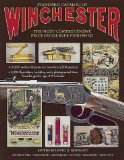
Standard Catalog of Winchester: The Most Comprehensive Price Guide Ever PublishedFrom 1886 to 1929 the Winchester Repeating Arms Company put its name on everything from garden tools to washing machines, promoting those products as being as good as the gun. Todays collectors know the Winchester name is magic, and now there is a single price and identification guide covering the full gamut of the companys products. The Standard Catalog of Winchester identifies and values more than 2,500 collectibles, including firearms, cartridges, shotshells, fishing tackle, sporting goods, tools and pocket knives, plus provides unsurpassed coverage of the companys popular calendars, advertising materials and packaging. Collectors will be amazed at the 2,500 photographs, including hundreds of rarely seen items and a gorgeous four-color gallery of the best Winchester offered.
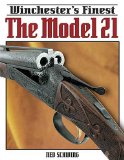
Winchester’s Finest: The Model 21The most complete guide to the finest double-barrel side-by-side shotgun made in America. Fans of this famous firearm will love this book, designated by the Olin Corporation as “the official history of the Model 21 Shotgun.” Inside, readers will find complete coverage of the evolution of the Model 21, from the early years to 1990.
Beginning with a discussion of the early development, successes and innovations in the model, the book delves into a complete exploration of frame innovations, stampings and sizes; barrel production, markings and grades; rib types; and stocks and forearms. Additional chapters cover custom, engraved and experimental models, production and sales figures, and contain an in-depth discussion of “The Custom Years” (1960-1990).

Winchester Lever Action Repeating Firearms: The Models of 1866, 1873 and 1876The lever action repeating rifles produced by the Winchester Repeating Arms Company are easily the most famous and recognizable firearms in American history. For nearly 140 years, they have been intimately connected with American hunters, first in the opening of the West, and after the close of the frontier, have continued to hold the position of America’s most popular hunting rifle.
The story of the Winchester rifle begins with the Model 1866 and its famous predecessor, the Model 1873. They were the first practical repeating long arms that did not require the strength of a weight-lifter to carry them about. A long tube under the barrel held the cartridges which were admitted to the breech by moving a lever down and up. This both pushed the cartridge into the chamber and cocked the hammer. The shooter then aimed and pulled the trigger. Working the lever again ejected the spent case and placed another cartridge in the chamber for a fast follow-up shot.
As with any other mechanical contrivance manufactured over long periods, changes and improvements were made to the Winchester rifles in the form of new parts. A M1873 rifle made in 1878 was not the same as a M1873 made in 1888 although to the untrained eye they may look the same. A collector of Winchester lever action repeating rifles and carbines wants to be assured that his Model 1873 is absolutely correct as the day it was manufactured. These are valuable artifacts of American history and are eagerly sought. Enough wrong parts can reduce the value of a particular Winchester by fifty percent or more.
Arthur Pirkle’s book provides collectors with the information needed to examine their Model 1866, 1873 or 1876 rifles and carbines and determine if each part is correct. The book also tells how to determine if the firearm has been refinished (reblued) which can also drastically reduce its value. Each part is described fully including markings and dimensions, any changes to that part are also described and everything is related to serial number ranges. Special appendixes describe special and valuable variations of the three rifles including those manufactured for the Canadian Northwest Mounted Police and special light and heavyweight hunting rifles. Assembly/Disassembly and cleaning information is given as is information on the “do’s and don’t’s” of restoration. Updated and correct serial number lists are included. Special line drawings (for clarity) show all major and most minor parts including the wide variety of front and rear sights.

Winchester Lever Action Repeating Firearms: The Models of 1886 and 1892In the mid-1880s, Winchester discovered that their position as the foremost maker of hunting and sporting long arms was under serious challenge from rivals such as Remington, Ballard and Marlin. The problem lay in the fact that the relatively short receiver required by the early lever action system limited the length, and therefore the power of the cartridges that could be used. Big game animals at long distances were beyond the range of many popular Winchester cartridges. To correct this situation and retain their leadership in the marketplace, John Moses Browning of Utah was approached to develop a new design. The result was the long action of the Model 1886 rifle that could accept the long, powerful cartridges of the day, including the U.S. Army’s .45-70 cartridge. The M1886 was an instant hit as a big game rifle and was used all over the world
A few years later, Winchester became aware of the demand for a smaller, lighter and more modern rifle for medium to small game. Again, John Browning came through with the M1892, a downsized version of the Model 1886 capable of chambering the smaller but still relatively powerful cartridges like the .25-20 and the .44-40.
Over the years, these two models have become very collectible. But the majority were heavily used by the owners at a time in our nation’s history when many, many people depended on hunting to supplement their diets. These rifles have been repaired and updated, sometimes at the Winchester factory but more often by the local gunsmith or even by their owners. The problem for the collector then is in determining what parts of the a particular rifle or carbine are original.
Arthur Pirkle’s second volume in the Winchester Lever Action Repeating Rifle series provide the collector, museum curator, arms historian, gunsmith and hunter with a detailed description of each part for both models as well as any changes made to that part during its production life. Organization is by serial number range. The book also includes a complete description of each model and all markings and other identification features. An updated and corrected serial number list is included. Extensive line drawings and an exploded view of each model illustrate the book. Line drawings are used for clarity.
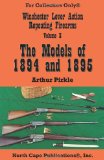
Winchester Lever Action Repeating Firearms, Vol. 3, The Models of 1894 and 1895The long-awaited third volume of Arthur Pirkle’s massive study of the Winchester lever action repeating firearms is now available. It provides all the part-by-part details on the most popular collectible and hunting models of the Winchester series found in previous volumes.
By the early 1890s, smokeless power and high strength alloy steels were close to being perfected. Smokeless powder was revolutionizing the firearms industry. The more powerful propellants were making it possible to accelerate small caliber bullets to double and triple the speeds of black powder. This allowed smaller cartridges and in turn more compact rifles. The high strength steels provided stronger barrel capable of resisting the erosive effects of the smokeless powders burning at far high temperatures than those incurred with black powder.
The Model 1894 was John Browning’s modernized version of his ground-breaking Model 1886 design. The internal locking lugs were not only stronger but were faster to actuate, making it possible to cock the rifle for the next shot more quickly than with previous models. New cartridges like the .30-30 and the .32-30 were far more powerful than even the big game cartridges developed for the model 1886 but in a package hardly larger and heavier than the M1892. Almost immediately, the Model 1894 rifle and carbine became “America’s deer rifle,” a position it still holds today, more than century later.
The Model 1895 was another John Browning design and one developed to handle the powerful new smokeless cartridges like the .30-40 Krag and the .30-06 developed for the U.S. military. The M1895 was a radical departure from previous Winchester lever actions. Its longer receiver was easily capable of handling the long and powerful .30-06 cartridge. The rifle quickly established itself as the premier American big game rifle. Teddy Roosevelt was an early and loyal supporter and hunted throughout the world with the M1895.
Because the Models 1894 and 1895 were developed later and the M1894 remains in production today collector interest in both rifles began later and developed more slowly than with previous Winchester lever actions. Today, that interest is a full peak. Both rifles are plentiful on the collector’s market and the prices are far lower than for earlier models. For the price of one M1886 carbine, a collector can assemble a representative collection of M1894s; for the price of two M1866 carbines, a representative collection of M1895s.
As with previous volumes in this series, all parts are described in sequence by serial number range. All markings, dimensions and finishes plus any changes to that part are fully explained and the part illustrated with clear and concise line drawings.
Appendixes contain a history of both rifle’s development plus descriptions of the Musket versions of both, serial number charts that have been revised and corrected and new exploded views.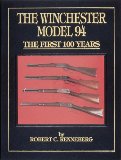
The Winchester Model 94: The First 100 Yearsn production for over one hundred years, and with over seven and one half million of these rifles produced so far, there isn’t any question that the most popular deer rifle in America is the Winchester Model 1894, and that it has held that favorite spot for quite some time.
The author begins with a concise, accurate history of this timeless lever action that starts with it’s designer John Moses Browning and carries right up through the post 1964 models, the commemoratives and the latest angle eject 94’s. Every aspect of the 1894 is covered; engineering changes, alterations, finishes, calibers and wood, often in great detail. The components, and variations thereof, are graphically presented with very clear close-up black and white photography. Collectors love it when information is offered to them in such a way that it quickly answers all their questions. So often I have been asked “Can you show me what to look for with such and such a detail, so I will know what I am buying?”. This is that book for the Winchester 1894, it answers questions quickly and it shows you what and where.
Fanciers of the Winchester Model 1894 will be absolutely delighted with what is in this book for it truly gives you “everything you ever wanted to know about the 1894 Winchester”, as well as covering a lot of questions you probably wouldn’t have thought to ask. I also enjoyed seeing the excerpts from early 20th century Winchester salesman’s catalogs, where for instance, a standard 38-55 caliber carbine could be had for the hefty sum of $17.50!
This reviewer was very impressed with the large amount of well presented information and the attention that is given to accurate photographic illustration. The book was a joy to read and I would highly recommend it for the library of anyone who collects or who simply enjoys Winchester’s wonderful Model 1894.
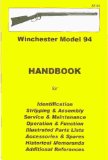
Winchester Model 94 Assembly, Disassembly ManualIdeal workshop reference for stripping and assembly with exploded parts drawings, specifications, service accessories, historical information and recommended reading references. And ideal workbook for shooters and collectors alike. 36 pp, over 60 photos and line drawings. Triple saddle-stitched binding with durable plastic laminated cover makes this an ideal workshop guide.
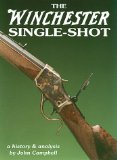
The Winchester Single-Shot, Vol. 1John Campbell is to the Winchester Single-Shots as Frank Sellers is to the Sharps. This book, and its Volume II, are outstanding books about John Browning’s first gun. It covers EVERYTHING you will ever want to know about this rifle, and then some. It is a must for anyone interested in the history of John Browning, Winchester and the famous Model 1885 Single-Shot Rifle. The book is FULL of pictures, diagrams and information about the 1885, including every modification and improvement this rifle went through during its long years in production. It also gives unbelievable details about every customized option or version that the rifle was ever made into. So if you are interested in the Winchester Single-Shot and its history, this book is the one, of two, to read.
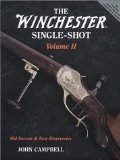
The Winchester Single-Shot, Vol. 2: Old Secrets and New DiscoveriesIllustrated on almost every page with period photography, drawings, schematics, advertising flyers, etc., John Campbell provides collectors and gun enthusiasts with a wealth of new information on one of the most popular American rifles ever made: The Winchester Single-Shot. Together with its companion title, The Winchester Single-Shot: Volume I, this newest volume by John Campbell provides the definitive reference work that will be an enduring, core reference for generations to come. The Winchester Single-Shot: Volume II provides authoritative, invaluable information and insights that includes the human side of the Winchester through detailed biographies of the men who made this rifle the legend it has become.
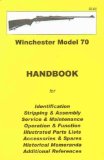
Winchester Model 70 Assembly, Disassembly ManualIdeal workshop reference for stripping & assembly with exploded parts drawings, specifications, service accessories, historical information and recommended reading references. And ideal workbook for shooters and collectors alike. 36 pp, over 60 photos & line drawings. Triple saddle-stitched binding with durable plastic laminated cover makes this an ideal workshop guide.
Hi,
I have a Winchester Model 75 Target with a straight English stock. Because of it’s dimensions, I’m sure the stock is original. I have not seen any other Model 75s with this stock, and I’ve looked at hundreds online. Do you have any info on this? Thanks
My family owns a Winchester model 1894 Type “D” rifle. Serial number is 881,761 which we believe was manufactured between 1917 ans 1919. Is this the rifle which is refered to as the “takedown model?” Our grandfather stored the rifle in two sections which consisted of the barrel removed from the receiver. I cannot find any instruction manuals on either the assembly or disassembly which explains putting the two parts together again. Can you offer some advise?
Cordially,
Allan Tiltti
Comments are closed.